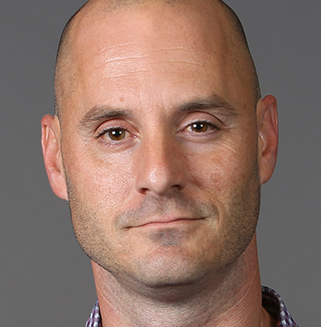THE KILLER IN YBOR CITY!
The following day, “The Firebug” was renamed “The Killer.”
On October 3, Anderson struck again. From the street, he shot through a disorderly house’s window on the corner of Governor and Kay Streets, killing one of the inmates, Viola Danford, and hitting her twice in the back.
The next day, October 4, he murdered Stephen Canal in front of his tiny shop on the corner of Nebraska and Fifth Avenues. He casually strolled to the shop, took aim, fired, and murdered the shopkeeper. He then casually walked away and disappeared into the Tampa night before the police arrived.
Ybor City was rippling with terror. This unknown murderer was killing at will and without fear of being caught, and it seemed no one could stop him. As people walked down the street, even if in a crowd, they flinched when a loud noise echoed throughout the night, wondering if it was a gunshot meant for them.
“The Killer” needed to be brought to justice, residents cried.
Then, on October 5, police spotted a man fitting the description of “The Killer” leaning against a wall outside a Ybor City bar as though he did not have a care in the world. When he spotted the police watching him, he did not seem worried. Police stood on the corner and watched him for a few moments. He then casually strolled down the street in the direction of the police. When he passed them, they grabbed him by the wrist and arrested him.
They took him to a local fire station for questioning, but he answered everything correctly, and it seemed as though he was not the killer. However, one detective felt something was amiss and asked if they could search his home. He agreed.
He led officers to a room he rented in a tenant home in The Scrubs, and, as the officers rummaged through his things, looking for evidence, they took their eyes off Anderson for just an instant, which was enough time for him to make his move. He dashed out the door and disappeared into the city. The police chased him but could not find him. “The Killer” had escaped.
Robert Anderson found an African American gentleman outside Tampa Gas Company who was willing to file his handcuffs off him. He then hitchhiked to Plant City, where he hid briefly before traveling to Mayberry, Lakeland, Sanford, and finally, Jacksonville.
Every law enforcement agency in the state was on the lookout for him! Various rewards from law enforcement and private citizens totaling $2,200 were offered to whoever could lead police to him. In early November, he was finally captured in Jacksonville, and a few days later, he was brought to Tampa. On the journey back to Tampa, police got Anderson to admit he was “The Killer.”
His trial was quick. Though witnesses could never give a vivid description of him following his crimes, when they laid eyes on him in court, they could positively state that Anderson was “The Killer.” Then, when Anderson took the stand, he admitted he was “The Killer” but tried to plead insanity. It did not work. The verdict was guilty, and the punishment was death by hanging.
Whether he truly killed and set fires because police ignored his request or because he was a maniac who just wanted to hurt others were never established. All law enforcement seemed to care about was that Anderson was off the streets.
On November 22, 1912, dressed in a black suit, white shirt with a standing collar, and a black tie, he stepped upon the trap inside the confines of the Hillsborough County Jail yard without a tremor. He murmured a short prayer while the deputies adjusted the rope around his neck and placed the black cap over his head. Finally, at 11:27 a.m., Sheriff R.A. Jackson, with his hand on the trigger, said, “Robert Anderson, may God have mercy on your soul,” and the confessed murderer dropped through the trap. His neck broke immediately, but his body swung for eight agonizing minutes before his heart stopped. When he was cut down, onlookers divvied up the rope for souvenirs.
As the last breath was pushed out of Robert Anderson’s body, Ybor City breathed its first sigh of relief since the nightmare began seven months earlier. Robert Anderson, aka “The Firebug,” aka “The Killer,” was finally gone.

Paul Guzzo is a reporter for the Tampa Bay Times. He found the lost segregation-era all-black Zion Cemetery. His unique beat also includes the local film industry, Tampa history, professional wrestling, and the odd and unique people who make up this area. Guzzo has been a journalist in Tampa since 1999, including a senior writer for Cigar City Magazine and Tampa Mafia Magazine. In his younger years, he was an independent filmmaker best known for an award-winning documentary on Charlie Wall, Tampa’s first crime lord.
